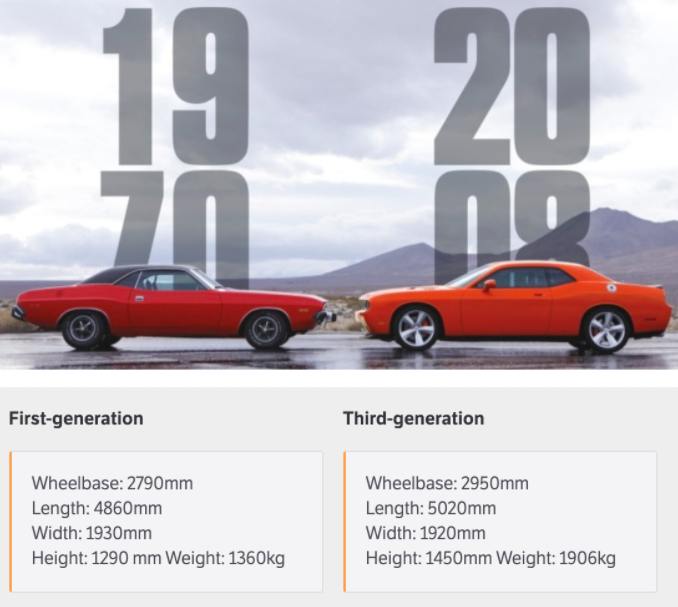Your customers (and you) are constantly looking around for cues on what to do and how to behave. Go to Palm Springs, a desert in California, and you’ll be struck by how many homes have real grass on their front lawns. Palm Springs is a desert. Why do people have real grass in their yards (and what does this have to do with product pricing?)
Homes in Palm Springs appear more likely to have grass in their front lawns if their neighbors do, too. Grass in a desert would seem crazy if no one else had it—but if other people have green front lawns, it’s established a new anchor of what is acceptable. We look to others for cues on how to behave — even if it implies we should plant lush grass lawns in a desert.
Of course, this is a slippery slope.
If your neighbor buys an ice sculpture for their son’s birthday or installs an Olympic-size pool in their yard, you may change your anchor on what is acceptable or even normal behavior!
We make decisions based on the salient and relative comparison points (especially when we’re trying to Keep Up with the Joneses). Some say this is why cars are getting bigger (safety is another reason), and why homes have ballooned in proportion. If the anchor keeps moving, so does your perspective.

You may have already guessed, but this analogy has everything to do with how we price products. Find out why at the end.
Here are four of the most salient behavioral economics concepts as they relate to pricing.
Pricing Principle #1: Design for the Perception of Value
Pricing is a representation of something’s value. But (this is important) value is not inherent to a product — it can change.
Value is just what we perceive it to be. So, how do people perceive value? The way people measure value depends on the context.
Sometimes context is time-dependent. We recognize the value (read: price) of something because we have experienced it in the past. If you want to buy a donut, for example, you know roughly how much that costs. You know its value. If you want to fly to LA from SF, you also know roughly how much that costs. When people have experience with prior consumption, value (and prices) can be hard to change.
Other times, we look for environmental context clues to evaluate value. For example, the value of a nice purse may not be obvious, so we look for cues like: What store is it in? What celebrity is wearing it? What are the prices of purses next to it? All of these cues inform our judgments on how valuable the purse is. In other words, price is more than a number — it’s about how people perceive that number. All branding experts out there should deeply understand this insight.
Cabernet Product Pricing Experiment
In their book, The Why Axis, Ayelet and Uri Gneezy from UCSD describe a behavioral economics pricing experiment they conducted with a winery owner. The goal was to determine the best price for a Cabernet.
On certain days they sold the wine for $10; on others, they priced it at either $20 or $40. You might assume that they’d sell the highest number of bottles at $10, since that’s the lowest cost.
Nope. It turned out that demand did fall off at $40, but the winery actually sold more bottles of its Cabernet when the price was $20 than when it was half that price ($10). Plus, customers who paid more indicated that the wine tasted better!
So even though the wine actually never changed its label (or taste), at a $20 price point, people perceived the wine to be more valuable and purchased it more.
This does not mean you should automatically raise your prices. It means that instead of starting with the question: “How should I price my product?” You should start with the question: “How can I best convey the product’s value?” Once you have conveyed your product’s value, you can determine the price based on customer’s willingness to pay.
Pricing Principle #2: Know what’s Relative
It is important to understand the anchors in your marketplace.
Because of principle #1, it will be hard for customers to attach a price to a new product or experience because they have no experience looking at similar or alternative products. After all, prices are relative; they’re determined by alternatives in the marketplace.
Startups and Product Pricing
Pay attention, startup founders: this matters to you. Relativity (or the lack of it) is why companies introducing a novel product to the world are in a very powerful position to set an anchor price. This is the reference point to which other similar products will be compared.
Example: In 2013 the Lytro Camera launched — it was a one-of-a-kind, never-been-seen-before camera. Because of this differentiation, the Lytro team was able to create a new price point for this camera that was in between a point-and-shoot camera (low) and a DSLR camera (high). If the Lytro camera had looked or felt more like a point-and-shoot, the team would have had to follow the point-and-shoot pricing norms and create a lower price. Because it was new and looked different, they could set their own anchors. But not for too long. Every Lytro camera that was introduced after the first one, was anchored to the first one’s price point.
If you are a startup, you may be like Lytro and can set a new price for your new product. But if you are competing with other similar products, you will need to be sure to build your product pricing model so that it seems reasonable in light of the market alternatives.
Related: Learn how to price your products using Behavioral Design principles
Pricing Principle #3: Make Sure Your Pricing Feels Fair
Dan Ariely likes to give us a thought exercise: Can you imagine if Google started charging for each Google search?
Say Google substantially improved its algorithm, and the changes saved you hours each day, making your life easier and more productive. It would seem reasonable to pay for a search, right? Maybe, but if Google started charging for search, it would cause backlash — the move would be perceived as deeply unfair by the public.
Amazon and Fair Pricing
Here’s another example: In 2000, Amazon showed different prices for the same product to people from different demographics. They wanted to see if they could drive sales by catering the price to the customer type. However, when the pricing variation was discovered, customers were outraged. Why? It just didn’t seem fair.
Fairness can be very important in product pricing strategies — more important if people think your pricing is not fair.
Pricing Principle #4: Start High
When you launch a new product, it will be next to impossible to increase prices later on. You have price flexibility, but usually just downwards.
In 2011, JCPenney hired Ron Johnson, the mastermind behind Apple’s retail success, as its new CEO. Johnson came in with big changes in mind, especially in regards to JCP’s pricing strategy.
Instead of sticking with the flash sales and surprise markdowns common at the chain at the time, Johnson got rid of the coupon and sale initiatives. Instead, JCP became home to “everyday low prices.” Consumers no longer had to wait for that special discount or sale — they could come into the store and purchase clothing at great, low prices every day.
How did it go? The change in pricing strategy was a huge failure! JCP’s sales dropped 25%, and Johnson was pushed out the door in 2013.
Loss Aversion
Why did this plan backfire? Why can Walmart get away with “everyday low prices” but JCPenny can’t. This has to do with the concept of loss aversion.
Loss aversion refers to the pain of losing something and the fact that it’s nearly twice as powerful as the joy of gaining something. In other words, it feels worse to lose a $20 bill than it does to receive one.
When discounts were taken away from loyal JCPenny shoppers, they not only felt like they were losing the thrill of the chase, but it was actually their perception that the prices went up. Without the discounts, base prices looked higher than the prices from before, even if they weren’t actually higher on average. This felt like a loss.
If you price your product low at the start to attract customers and then try to increase prices in the future, you risk learning the same painful lesson that JC Penny did.
Putting it All Together — What Does Grass have to do with Product Pricing?
Loud sounds are loud only in comparison to the other sounds we hear. Expensive things are expensive because of how they compare to alternatives and our past purchases. In short, there’s really no such thing as big or small, expensive or cheap — there’s just bigger, smaller, more expensive and less expensive.
Just like the people in Palm Springs who looked to their neighbors to see what is reasonable, your customers look around their environment to make decisions on if your product is expensive and or if it is cheap.
At its heart, pricing is an expression of what people value, but this isn’t always based on our rational evaluation of value. The fact is, when we’re making buying decisions, we’re deeply influenced by our emotions. And when it comes to discounts, emotions rule.
Want more examples of real-world pricing experiments and the lessons gained from them? We have a full module dedicated to pricing in our online Bootcamp!
